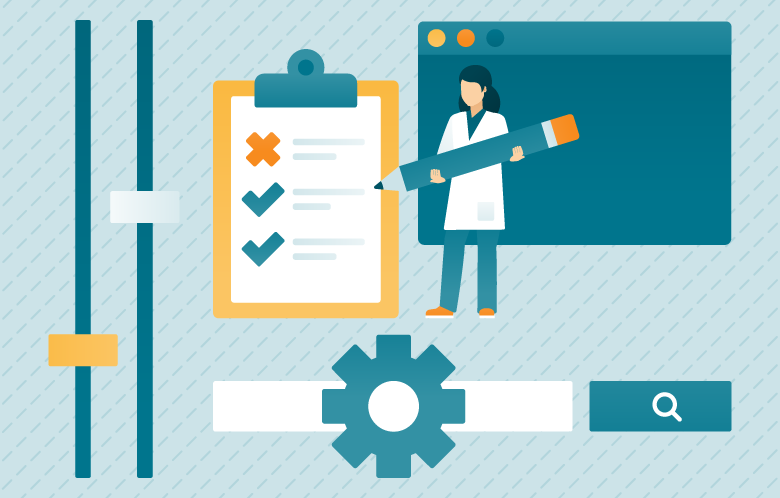Medical research is a complex endeavor, and depending on who or what your research serves, there will be even more specific nuances. Yet, access to relevant and evidence-based information is vital to the progress of clinical trials, patient care, and the adoption of treatment advances by physicians. Medical librarians need to ensure that access to resources is easy and quick – to alleviate the research stress that comes with complex medical research. While there are many options to consider for a medical research platform and many features that are must-haves for your end-users, there are often critical (and overlooked) user interface elements that need to be part of the consideration. Here are four.
#1 Configurations
The ability to seamlessly configure integrations into a medical research platform means a consistent user interface experience. This includes elements like linking integrations and custom placards, which enable information to be highlighted, for example, technology services or popular resources (e.g., PubMed, DynaMed) and even library chat tools. No matter how or what you configure in your medical research platform, what is important to the end-user is the ease with which they can connect with the right resource.
#2 Peer-Review Indicators
Peer-reviewed journal articles have undergone an evaluation process in which experts critically assess the quality and merit of the article and its research. Peer-reviewed content types ensure a level of quality that a medical researcher can trust. Some medical researchers may have to take a multi-step process to access peer-reviewed content if they do not have knowledge of the leading healthcare journals or databases like CINAHL or PyscINFO. A simple indicator or filter capability in your medical research platform can highlight peer-reviewed content easily.
A good medical research platform is more than just its resources. It is meant to help the user connect with the right information for their knowledge, and this is often due to an intuitive user interface.
A good medical research platform is more than just its resources. It is meant to help the user connect with the right information for their knowledge, and this is often due to an intuitive user interface.
#3 Visual Connections of Subjects
Showing a researcher connection between subjects is a huge benefit in finding relevant information for research, but when it is done visually, this leads to discoveries that might not have happened otherwise. A feature like a “concept map” benefits the medical industry by organizing and categorizing subject terms/relationships in medical research.
#4 Personalization
Because clinical usage is fleeting and competes with clinical rounds, patients, etc., it is helpful to provide users of your medical research platforms with the ability to personalize their research experience with a space they can return to again and again. Having a dashboard space for users to return to find past searches, saved items or viewed items brings them quickly back into their research. There is minimal information “stumbling” when you can see immediately what has already been accessed and interacted with. Similarly, the ability to organize information by project helps keep a researcher on track with their work and arranges what could be an overwhelming amount of information into specific needs, ideas, or projects.
A good medical research platform is more than just its resources. It is meant to help the user connect with the right information for their knowledge, which is often due to an intuitive user interface. When assessing a medical research platform, look for interfaces that aid in reducing cognitive load and get the user to the information they need in as few steps as possible. Download the eGuide to learn more about what elements make up a good user interface and how the right medical research platform can help users overcome the eight common barriers to clinical information access.



